
The History of Malbank
A brief history of Malbank School and Sixth Form College
Nantwich Grammar School
Malbank’s exact date of founding is unknown, but the school’s original foundation was in St Mary’s church’s courtyard and the generally accepted year of Nantwich Grammar school’s founding is 1560. This is derived due to the Chantry Roll for Nantwich from 1548 requesting that a grammar school be founded. While in Johnson’s Nantwich and Crewe magazine of 1868 it states that Sir Ranulphe Crewe born in 1558 went to school in the town. Later becoming the speaker of the House of Commons from 1614-20. The school is next mentioned in a report about the great fire of Nantwich on the 10th of December 1583 that states, ‘most of the buildings on the east side of the river were destroyed, except for the church, the grammar school, corn mill and houses at the end of Beam St., Hospital St., and Pillory St’. The school is mentioned later in the trial of Mr Richard Wilbraham for the murder of Roger Crocket in which the school’s third headteacher Mr Mainwaring was a witness. Royalty first visited the school on the 25th of August 1617 when King James the first returned from a visit to Scotland and stayed a night in the town. Attending a church service and received an oration in Latin from one of the scholars. The next time the school would be visited by a monarch would be 328 years later on the 17th of July 1946 when the school was passed by the then King George VI and his Queen during their tour of Cheshire, who were given three cheers by the present students. In an autobiography by Rev. William Watford who lived from 1773-1850 in which he mentions that the main language taught at the school was Latin, although a few students chose to learn Greek. In 1836 the Charity commissioners reported that the school had eight free boys, fifty-day boys and nine boarders. However, in 1858 alterations to the church’s courtyard necessitated the school’s move to Welsh Row in 1860.
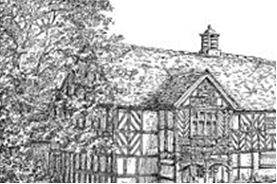 A Drawing of the school by the church
A Drawing of the school by the church
Acton Grammar School
The second school that contributed to Malbank’s history was Acton Grammar School for which we have the exact date of its founding of the 26th of May 1662, and it was on this day that Founder’s Day used to be celebrated on. The school’s hours differed slightly as in summer they taught from 7am to 11am and 1pm to 5pm while in winter they taught from 8am to 3:30pm. In Acton Grammar School as in Nantwich Grammar School they taught both Latin and Greek. By 1860 the school consisted of a residence for the teacher, two cottages that produced £16 (£1,557.30 in today’s money) per annum. By the time the school amalgamated with Nantwich Grammar School in 1885 it was in debt to the sum of £39.14s.2d (£2,866.71 in today’s money). This debt was paid for by the Governors of the new Nantwich and Acton Grammar School by selling Acton Grammar School’s old building to churchwardens of Acton for the sum of £400(£41,144.55 in today’s money). The school was later demolished to provide space for the graveyard however the steps to the building are still visible in Acton’s graveyard
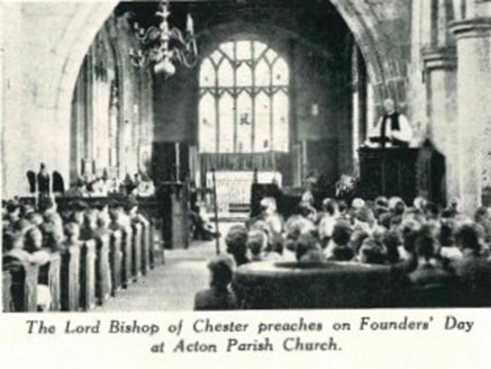
|
The Blue Cap School
The final school to contribute to Malbank’s history was The Blue Cap school or Charity school, it was first mentioned in an account in the Charity Schools of Great Britain and Ireland of 1712, which noted that “forty boys taught who wear blue caps so that their behaviour may be better observed abroad.” The school was funded by several donators such as Mrs Anne Crewe Offley of Crewe Hall who left £5(£826.28 in today’s money) per annum to the school in her will and a Mr Richard Wilbraham who gave £163(£26,936.75 in today’s money) and a Stephen Wilbraham who gave £500(£82,628.07 in today’s money). The school’s uniform is mentioned to be a stout drab jacket, a blue cloth cap, a pair of shoes and a pair of stockings that cost £23. 3s. 11d. (£3,288.30 in today’s money) paid for by Mr George Wilbraham. They were taught English and the older students in writing and were chosen by Mr Wilbraham’s agent from the poorest boys of Nantwich. They were taught in a building in Pepper Street that was rented for £1(£165.26 in today’s money) a year; when the school left it became a draper.
The Move to Welsh Row
The move of Nantwich Grammar School to Welsh Row coincided with the joining together of Nantwich Grammar School and the Blue Cap School on the 22nd of March 1860. The school fees were a shilling (£3.61 in today’s money) a week for children under ten and for those over ten two of which three quarters went to the Master and the rest went to the benefit of the school. The register of 1860 showed that the school had twenty-four boys who were educated in reading, writing, arithmetic, general English literature, sacred and profound history, geography and bookkeeping to name a few. On the last register of the school in 1885 it shows the school had forty-five pupils of whom eight were ‘free boys’.
|
|
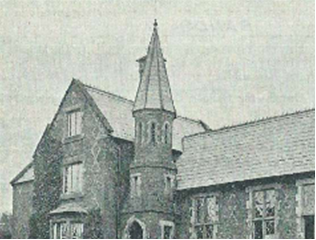
Nantwich and Acton Grammar School
The name Nantwich and Acton Grammar School was acquired in 1885, when Nantwich Grammar School and Acton Grammar School amalgamated. This was approved on the 19th of May 1885 by the Queen at the time and her Privy Council. The first register of Nantwich and Acton Grammar contained sixty-two names, of which thirteen were free boys, the fees for going to the school were £4(£411.45 in today’s money) a year if under ten and £5(£514.31 in today’s money) if over ten. Girls were first allowed to attend the school in 1905 and were housed in the Technical Institute on Beam Street and a field was rented on Dog Lane as a playground for the girls. In the same year negotiations began with Mr Wilbraham over the purchase of land to the north of the school site, in order to erect some new buildings. Several years later in 1907 the school adopted a new cap like those worn by the Blue Cap School, the first cap with the initials N.A.G.S. which was replaced by a metal badge containing two shields. On the right, one representing Acton with the Wilbraham family crest, while the one of the left, represents Nantwich and is the Malbank family crest. This eventually became the badge we have today after it was combined into one shield and two horses’ heads were added due to the school’s nickname NAGS which means horse.
Under the new headteacher Mr Powell’s leadership, the school adopted a ‘rural tone’ that included bringing a focus on a more natural study and general elementary science to be followed by botany and physics. This had a profound effect on the number of students at the school, going from a low 33 to 134, that led to it being necessary to expand with more buildings. On the 23rd of October 1911, the governors approved the schools purchase land from Mr Wilbraham on which the new building (A block) was to be erected. The building was commenced in 1913, however had to be stopped upon the outbreak of war in 1914-18. At the time it was stopped the walls were only 6ft high and the area around the building was surrounded by barbed wire. During the war Mr Powell left to serve in the army as a Major while Mr Partridge took over in his absence. Over the course of the war many Old Grammarians were killed in the line of duty to whom a war memorial was erected in front of A block, later a section to commemorate those lost in the Second World War was added.
|
|
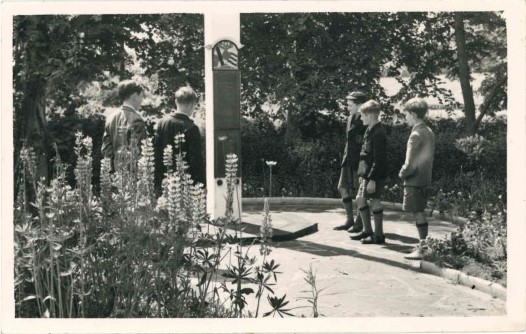
Eventually the school building was finished in 1921 and on the last register of the old school there were one hundred and eighty-one pupils. The school’s doors were provided by Parker Winder & Achurch and many have stayed the same since their installation apart from the occasional new coat of paint. In 1932 a change of the school’s rural tone occurred with the headteacher at the time later saying that his goal at the time was to get young to have the philosophy of appreciating goodness, truth and beauty. To achieve this aim, one hundred trees were planted on the site to improve its beauty and from this time is also when the school got the lectern and Headmaster’s boards. On the 19th of July 1935, near a section of the Grammar School House’s walls the cannonball which currently presides in the headteacher’s office was located by Alec Latham during works to widen Welsh Row.
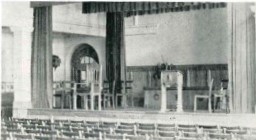
|
|
The expansion of the rural tone was extremely successful increasing numbers of pupils at the school from two hundred and ninety-three to four hundred and twenty-one in seven years. This led to the expansion of the school with extensions to the hall, cloakrooms, gymnasium and a new wing of six classrooms and a new library. Those additions started around 1939 and continued throughout the war to be finished in 1942. Another addition during wartime was the bomb shelters placed out the back of the school in the rough location that T block is now.
There is more clarity to the events at the time of the war through school magazines, in which the Thrush Houses’ ten-year winning streak is mentioned, as well as the school raising over £34,500 in today’s money for charitable causes. They also include wartime frontline accounts from teacher Mr Hughes, who sent us several accounts including a rather action-packed encounter in Africa. It also mentions how 70 former pupils were given commissions and 12 were awarded distinctions. At one time during the war, it is mentioned that the school had 8 evacuees; the school also became home to Oldershaw Grammar School who had evacuated the Wirral due to the bombing and to refugee children from Guernsey one of which contributed to the school's magazine by explaining the ways of the island. One evacuee described his time here as “One of the happiest and most interesting times of his life” despite his attendance of only a year. After the war, the school continued to raise money for numerous charitable causes such as the aid to Austria fund and Save Europe Now fund, it also donated £268(£7,800.27 in today’s money) to the Nantwich Welcome Home fund for soldiers returning from the war.
The free education act of 1944 was passed that meant all public secondary schools had to provide free education which led to the number of students at the school to rise to seven hundred and ninety by 1959. During the post-war period, H block was added it was of concrete construction, later in 1989 it was demolished(on Cheshire East's request) due to low pupil numbers although almost immediately after this pupil numbers rose, so the school had to introduce a number of mobile classrooms to keep up with demand.
The increase in students from the 1944 free education act necessitated expansion for the school such as the expansion of the cafeteria, the hall, the gymnasium and the addition of S block (between 1962 and 1966) and an expansion to A block (also between 1962 and 1968) along with the introduction of a new house called Kent. It is interesting to note at this time the school had a ‘school parliament’ whose members were elected by those of their form and would debate issues and vote if they believed a school rule should be changed this motion was then given to the headteacher for it to be passed or ignored.
In 1977 the school became comprehensive and changed its name to Malbank after the first lord of Nantwich(the name Dorfold was considered due to its proximity to the school, but it was decided against as to not use a family name), the biggest addition by far to the school was T block that was also added in the 1975 along with the sports hall and one year later the current sixth form block was opened. At the time the school had four houses Malbank with the colour purple, Kent with the colour green, Hodgkin with the colour yellow, Wilbraham with the colour red and Dorfold with the colour brown added in 1977. At this point in time the original building for the school built in 1860 was being used as a house for the headteacher Herbert Rowsell and his family. During this time the school had a school song called Gaudeamus Igitur which was carried on into the 1980s. During the reorganisation of the school after it became comprehensive heads of year were introduced for the first time.
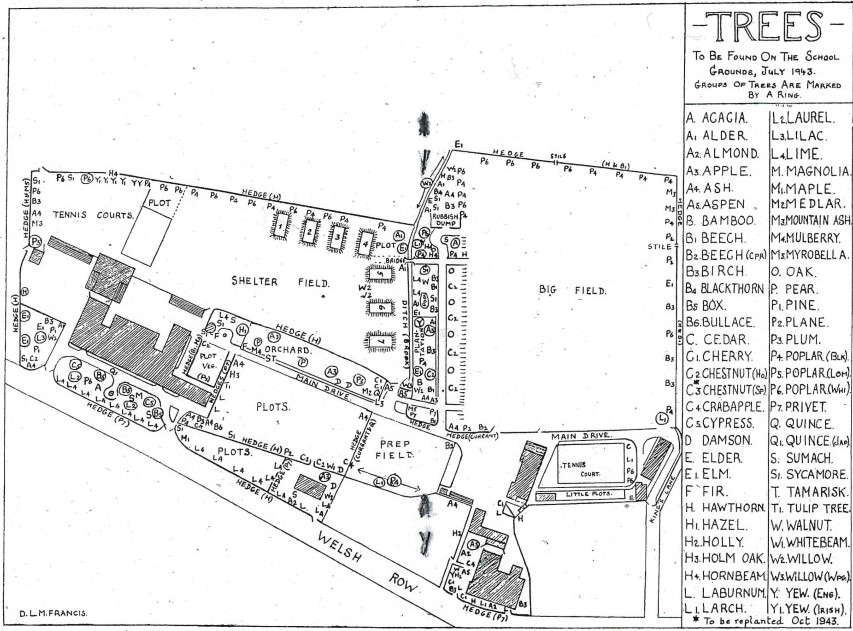
|
In the 1990s the school sold of the hockey pitch opposite to it on the lane to developers, it used the money from this sale to build the modern car park replacing the bus park that was formerly on the left side of the building where the bike sheds are now. An addition to T block however was made around 2005 to increase the height of the ceiling in the dance classroom that moved into the room as Music moved to M block that had been vacated by English department as they moved into B block that was newly constructed at the time. |

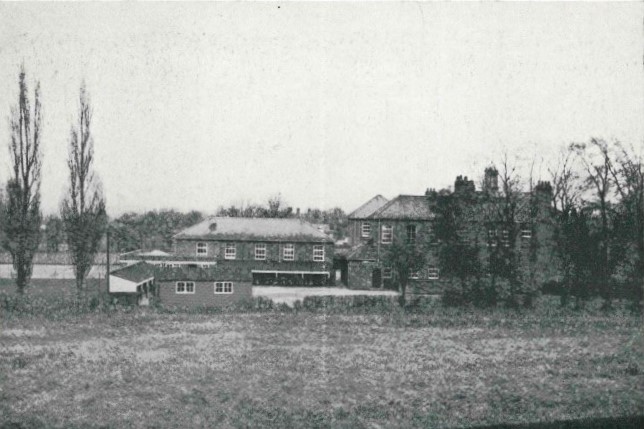
|
|
The Last 20 Years
The last twenty years has seen the development of lots of aspects for the school. The uniform has changed twice from a jumper, shirt and red and blue striped tie to a maroon shirt and blazer as we changed focus to performing arts, with it being specifically chosen to be inexpensive and to lessen the washing and ironing needed, then as the school went back to a more academic focus it returned to a blazer shirt and red striped tie.
It has also seen a reintroduction of the house system, reducing the original eight houses (Acton, Church, Dorfold, Kent, Hodgkin, Thrush, Wilbraham, Brereton) to four – Brereton, Dorfold, Kent and Wilbraham (the latter named after the first headteacher of Nantwich and of the family who donated so readily to the school in its earlier years respectively).
The addition of house animals has brought the system alive to current students: Brereton Bears, Dorfold Dolphins, Kent Kestrels and Wilbraham Wolves. In 2007 the continuation to the Nantonian, which was cancelled in the 1960s with the last known copy from 1962, The Gaudeamus was created and runs to this day. In 2022 A19 was reverted into a classroom from a computer room adding to its long list of previous purposes of being a ‘SEND’ room, an art classroom and an English storeroom. Several other rooms have changed purpose such as a portion of the current library being converted from the Deputy Headteachers room and A22 being converted from a laboratory in the 1940s to later become the Male staffroom with the female staffroom being in the current medical room and the current staffroom formerly being the sixth form common room.
The school has also seen lots of changes to the site such as an extension to the hall and the addition of most of the boulevard eating area and most notably the addition of Z block. During this period, the school celebrated its four hundred and fiftieth anniversary in 2010 and celebrated A block’s one hundredth anniversary.
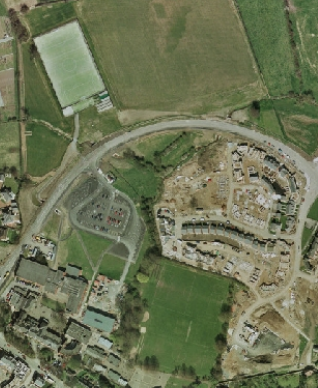
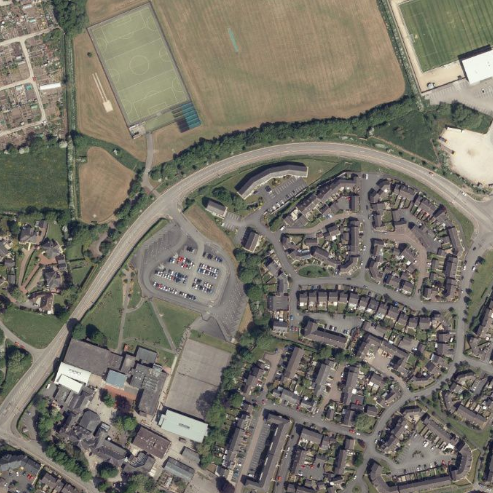
|
Arial photos of the site taken in 2003 and 2017, showing the 21st century growth |
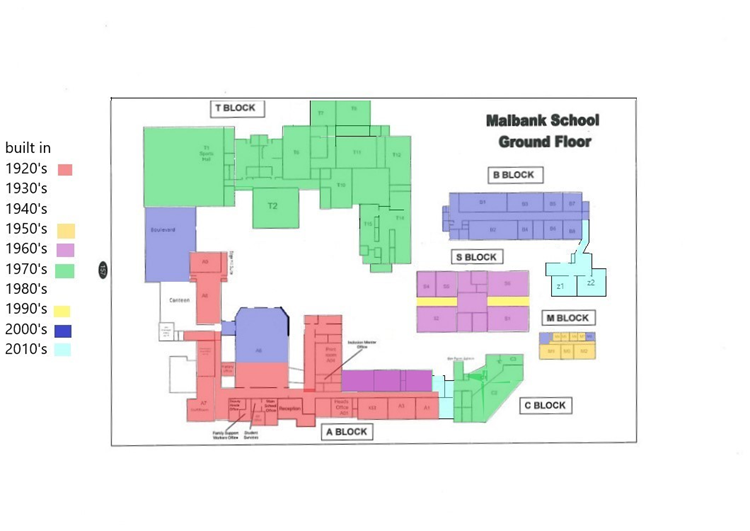
Prefects
The first records of the existence of prefects are from 1932 with 15 pupils with the role of prefect and they are praised in Mr Lodge’s speech day in 1933 and commented on with “In the declaration which our prefects are now called upon to make on entering office, loyalty to the school is coupled with the wider loyalties to our country and to the human race.” They were not present in 1915 as a magazine mentions that the seniors help to keep younger pupils in line, however this was done in an unofficial capacity. Up until 1940 prefects had a private cloakroom however upon the renovation of the school it was removed, as an act of protest the prefects of the time wrote a poem criticising its removal. It read.
Our eyes are dim, our handkercheifs are wet,
Alas! The prefects’ cloakroom is no more:
The drying cupboard is firmly set
And we stand weeping here outside the door.
No more shall we play hoop-la with our hats
And bruise our dainty limbs upon the chest
(Wherein repose last summer’s rounders bats),
Where we have blown up netballs with the best.
The old historic box hides sins galore,
From broken bottles once containing turps
To newly painted balls upon the floor,
And confiscation torn from little twerps.
We unpaid toilers now have lost our den,
And with the common herd we must mix again.
They are mentioned again in 1941 when it was mentioned that prefects were involved in the School fire watching system although it is likely it was on a volunteer basis rather than as part of their duties. However, it is clear that their duties did include watching out for late students. They are further mentioned in the 1945 speech day by the headmaster where he mentions that the school has enough pupils in the sixth form to compliment amount of prefects required. In another addition, they are thanked for doing stellar service along with all others in less official positions. They are next mentioned in the 1962 edition of the magazine where the six prefects are thanked for their work. It also mentions the positions they had with two head prefects, two deputies and two temporary prefects for when the others had exams. Prefects were traditionally selected from the sixth form however by the 1990’s it changed to year 11’s taking up the role. By 2004 prefects could be denoted by a badge embroidered with the word Prefect. The selection of prefects was temporarily stopped however they returned in 2023 with a new Blue Tie.

In tribute to Herbert Rowsell Headteacher of Malbank 1969-1991
Mr Rowsell originally started his career at Malbank by applying for the deputy head role however due to Mr Morris’ sickness and unfortunate death in 1969 almost immediately after joining the position he was propelled into the role of headteacher of the school. At the time he was the youngest headteacher in Cheshire at the age of 36, and he stayed in his post for 22 years, the longest any headteacher at Nantwich and Acton Grammar School or Malbank has been in the position before or since, before leaving Malbank at the age of 58. During his time at the school, the school changed dramatically during his leadership with many additions to the site such as the introduction of what is now known as T block in 1975 along with the sports hall and Sixth form’s block. At the time of his appointment there was a growing pressure for schools to become comprehensive and eventually in 1977 he decided that it was in the school’s best interest to become comprehensive, and its name changed from Nantwich and Acton Grammar School to Malbank School and Sixth Form College. Finally, in 1991 he retired from his post as Malbank’s head after 22 years, he died in September 2022 and his memorial was held at Malbank on the 10th of February 2023 which was attended by his family, friends, former teachers, and some current students and the headteacher Mr. Harrison.
|
Please see the video links below which explains this history of Malbank and the school House System. |
Written and researched by James Potter
James first started researching the School's history when he was Year 8. He found it a fascinating subject and is a brilliant case study of how the area and education as a whole has changed over Malbank's lifetimes. The project was researched and completed with dedication and commitment in his own time with help from Malbank History department, Mark Brisbourne and Mrs Walton. We hope you enjoy reading the history of our school and agree he has done an amazing job.
If you have any stories from you, your family or your friends that are former teachers or students that you would like to be included please send them to [email protected]
